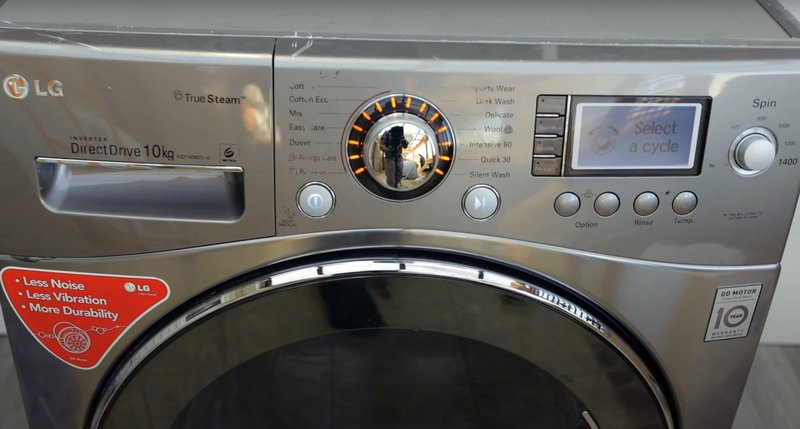
The “LE” error code on an LG dryer is akin to a warning light on your car’s dashboard. It’s essentially the dryer’s way of telling you that something’s not quite right. Now, this doesn’t mean your dryer is about to explode or cause a fire, but it does mean that it’s experiencing a technical hiccup. Understanding what this error signifies is the first step to deciding the next course of action.
Understanding the LE Error Code
So, what exactly does the “LE” error code mean? In the simplest terms, it stands for “Locked Motor Error”. Imagine the motor as the heart of your dryer, pumping energy to keep everything spinning smoothly. When the “LE” code pops up, it’s like your dryer’s way of saying, “Hey, my motor’s having a tough time keeping up!”
This error often occurs when the motor is unable to turn the drum correctly. Think of it like trying to pedal a bike with the brakes on – it’s possible, but the wheels aren’t going to spin as freely as they should. Several issues might cause this: an overloaded drum, obstructions, or even a problem with the motor itself. Whatever the cause, your dryer’s motor is struggling and needs some attention.
By understanding the cause of the error, you can start to fix the problem. Sometimes, simply reducing the load inside the dryer could alleviate the stress on the motor. Other times, more detailed troubleshooting might be necessary. In any case, knowing what “LE” means empowers you to make an informed decision about whether to continue using your dryer.
Common Causes of the LE Code
Let’s explore what can lead to the “LE” error code. The most common culprit? Overloading. It’s like trying to pack too much into a suitcase – eventually, the zipper just won’t budge. An overloaded dryer drum creates excess stress on the motor, preventing it from spinning properly.
Another frequent cause is an obstruction. Imagine trying to rotate a merry-go-round with something wedged underneath – it just won’t spin smoothly, and the same principle applies to your dryer. Loose items stuck in the dryer or issues with the drum bearings can also lead to the motor struggling and throwing an “LE” error.
Lastly, a genuine fault in the motor or the control board might be at play. It’s a bit like a power outage in your neighborhood – everything’s wired correctly, but something beyond your control is causing the issue. At this point, professional assistance might be necessary to diagnose and fix the underlying problem.
Is It Safe to Use the Dryer with the LE Code?
Here’s the deal: using a dryer with an “LE” error code isn’t advisable. Ignoring it may worsen the issue, similar to how neglecting a toothache can lead to a bigger dental problem. Running the dryer despite this error might lead to further wear and tear on the motor, potentially resulting in costly repairs.
Moreover, there’s a safety aspect to consider. Although the likelihood of immediate danger is low, continuous operation under strain can lead to overheating. It’s like running a marathon with a sprained ankle – you might make it through, but not without risking further injury. Therefore, addressing the error is the safest route.
If you encounter the “LE” code, it’s best to stop using the dryer until you’ve identified and corrected the problem. Whether it’s redistributing the load, checking for obstructions, or calling a professional, resolving the issue is crucial for both safety and efficiency.
Steps to Fix and Prevent the LE Error
First things first, try reducing the load in your dryer. It’s akin to lightening the load on a struggling donkey – a little less weight can make the journey much easier. This simple step often resolves the error if overloading caused it. Give the drum a spin by hand to ensure there are no obstructions, and check for any visible issues.
If the problem persists, unplug the dryer and leave it for a few minutes. This resets the machine, which might resolve temporary glitches, just like restarting your computer can fix a minor software hiccup. Once reset, try running a lighter load to see if the problem resolves.
For stubborn issues, consulting an LG service professional is a wise choice. They can diagnose more complex problems, much like a vet would with a sick pet. They have the tools and expertise to get your dryer running smoothly again. Regular maintenance and avoiding overloading will also help prevent future occurrences, ensuring your dryer operates efficiently for years to come.
In conclusion, while encountering an “LE” error can be frustrating, addressing it promptly ensures the longevity and safety of your dryer. Taking action now could save you from bigger headaches – and expenses – down the line.